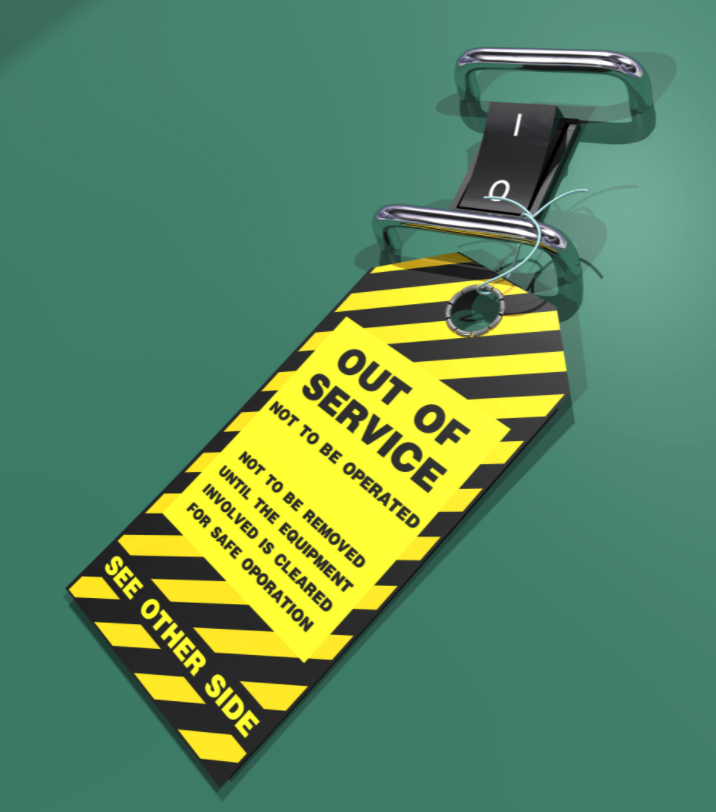The industry mantra is TEST EVERY TIME BEFORE YOU TOUCH.
When you isolate you must test for de-energised or test for dead. Testing for de-energised is LIVE WORK because you need to make positive contact with the conductors and there is a possibility that the circuit is energised. You must be licensed and competent; and as a minimum follow the live testing rules. This testing requires a SWMS and a risk assessment to be conducted. You may also need to have a trained and competent Safety Observer.
The test for de-energised must make positive contact with the conductors and you must check your test instruments both before and after testing.
Note: Proximity sensors are non-contact indicators and must not to be used to prove isolation. They can be useful to detect electrical signals but are not a reliable confirmation of safe de-energisation or isolation.
Steps in low voltage electrical isolation are:
Consult/warn, Identify, Switch/isolate, Secure/LOTO and Test to confirm de-energised.
Following isolation of all power sources, and the locking out of all isolators, and tagging of each by all persons required to work on or near the electrical equipment, test to ensure it is safe to proceed before commencing work.
- A padlock is to be used to lock out switches and circuit breakers on electrical circuits or equipment to enable work to be carried out, on or adjacent to such equipment.
- If more than one person is working on the same de-energised electrical installation, individuals should ensure their own personal lock is applied to the isolation point, otherwise the principles of tagging apply. This includes apprentices as well. Danger tags must be securely attached to the isolator/control switch or device so there is no risk of becoming dislodged. They must be clearly visible to ensure inadvertent restoration of the power does not occur.
- Each person is to be fully informed as to the extent of such isolation and must also be advised of specific areas or items of equipment that are not de-energised, if any.
You must be absolutely certain that the fuse-switch or circuit breaker that you have locked and tagged is the correct one. If you are in any doubt as to which switches must be isolated, do not proceed until you have confirmed from schematics or tracing or asked your Supervisor or appropriate person.
Never assume an exposed conductor is dead – TEST EVERY TIME BEFORE YOU TOUCH.
A danger tag is used at all points of isolation to identify that the energy sources are isolated. However, the danger tag is not required when using dedicated personal isolation locks that are labelled with the owners name and contact number.
Each Danger Tag or lock should be:
- Be red, white and black in colour and have ‘Danger’ clearly displayed.
- an approved type in new condition, without erasures or alterations and should bear the contractor’s name
- dated and signed by the worker or workers involved in carrying out the work or, where appropriate, by the supervisor in charge of the workers
- securely attached in a prominent position on each isolation point (i.e. the point or many points used to isolate electrical parts) or device.
If you are working alone and the job is incomplete at the end of the work period, you should remove your Danger Tag (or personal lock) and replace it with an “Out Of Service” Warning Tag.
“Out Of Service” Warning tags can also be used to quarantine equipment found to be non-compliant, in disrepair, or otherwise unsuitable. The tag needs to be labelled clearly indicating the issue, include the date, person, and a traceable record to identify the issue.
Personal Danger Tags should not be left on site. When a worker leaves for the day they should remove their danger tag and if no one else has a tag in place, replace it with an out of service tag. When the worker returns to site they replace the out of service tag with their danger tag again. Therefore there should not be an occurrence when you need to remove another person’s danger tag.
In exceptional circumstances, a responsible management person may remove the tag, only after making certain they know the reasons for the tag being attached and after a thorough inspection, checks and tests to make sure it is safe to restore power.
In certain situations (e.g. when removing wiring such as in a strip out or demolition) it may be more practical to secure the isolation by physical disconnection and tying back the cabling at the source, thus isolating the worksite. Confirm isolation by tagging and testing.
Otherwise known as the “Strip, Twist and Tape” method. Temporary bonding (that is, short-circuiting the earth to the neutral and with the de-energised phases) should be used where there are cables left un-terminated for any period of time. This will prevent accidental re-energisation of circuits when fit off has not been completed.
This is also required when working with HV equipment. PPE and safety apparel should be used when attaching or removing temporary HV bonding conductors.
- Attaching – first connect the temporary bonding conductors to the general earth, then neutral, before any attempt is made to attach them to any de-energised component portion of the electrical installation.
- Removal of the bonding conductors must be carried out in the reverse order (ie remove the temporary bonding conductors first from each of the de-energised phases, then neutral, then earth).


